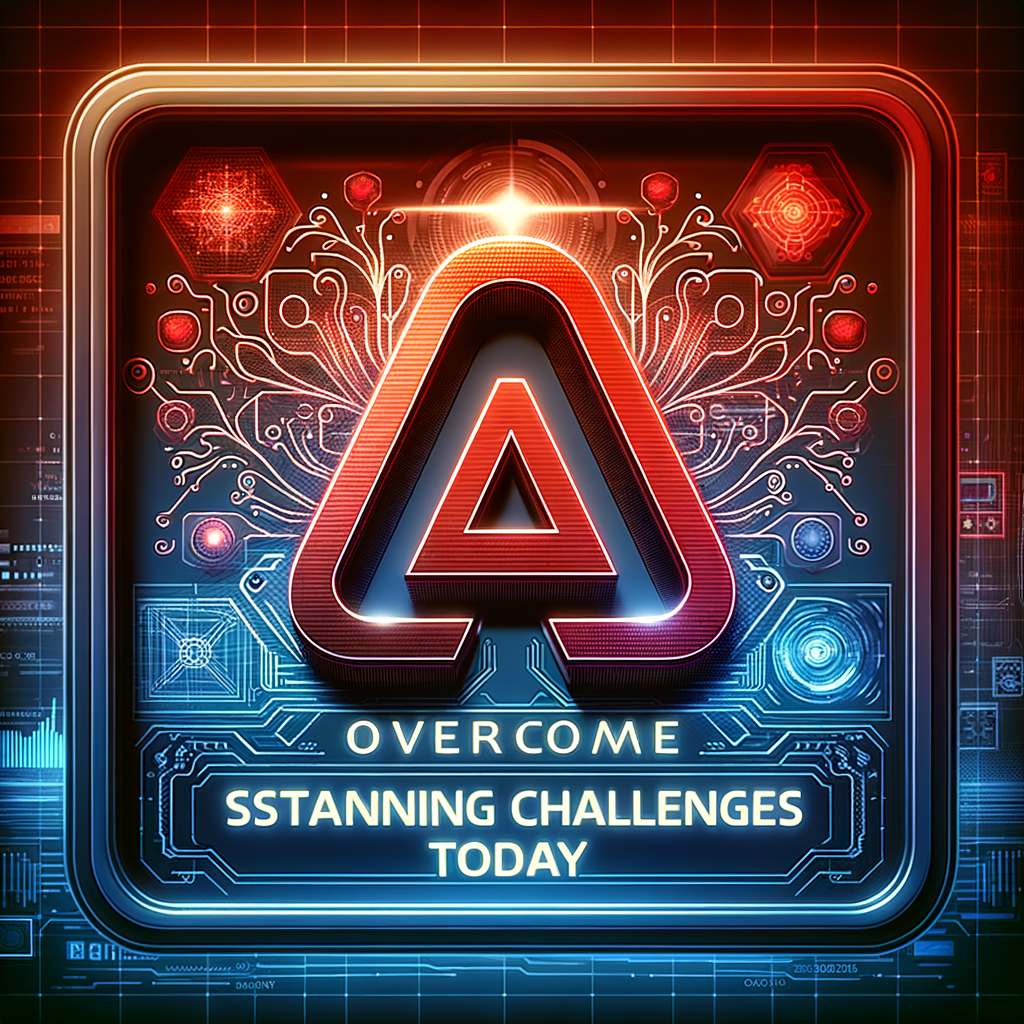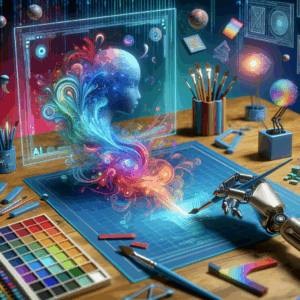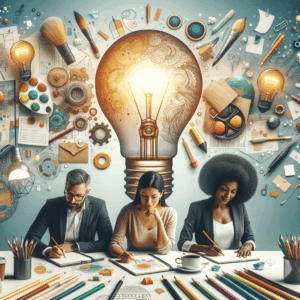
AI Logo Redesign: Overcome Stunning Challenges Today
- Understanding AI in Logo Redesign
- The Key Benefits of AI in Logo Redesign
- 1. Enhanced Speed and Efficiency
- 2. Data-Driven Insights
- 3. Cost-Effectiveness
- The Challenges in AI Logo Redesign
- 1. Creative Limitations
- 2. Interpretation of Brand Identity
- 3. Ethical Considerations
- Steps to Successfully Implement AI in Logo Redesign
- 1. Define Clear Brand Guidelines
- 2. Choose the Right AI Tool
- 3. Collaborate with Human Designers
- Best Practices for AI Logo Redesign
- 1. Stay True to Your Brand
- 2. Test Designs with Target Audiences
- 3. Continuously Monitor Trends
- Real-World Examples of AI Logo Redesign
- Example 1: Instagram's Logo Evolution
- Example 2: Airbnb's Rebranding Journey
- Future Trends in AI Logo Redesign
- 1. Increased Personalization
- 2. Enhanced Collaboration Tools
- 3. Emphasis on Sustainability
- Conclusion
- FAQs
- References
Understanding AI in Logo Redesign
Artificial intelligence (AI) has rapidly evolved, transforming how businesses approach creative tasks, particularly in logo design. The fusion of AI technology with creative processes offers a fresh perspective. It allows designers to explore new avenues while overcoming challenges that often arise in logo redesign.
When embarking on a logo redesign project, companies might face issues such as outdated visuals, brand misalignment, or market changes. AI can play a pivotal role in resolving these issues. It offers enhanced tools for analyzing trends and generating innovative ideas, ensuring that logos resonate with modern audiences.
The shift toward AI-driven solutions presents both opportunities and challenges. As we explore this dynamic terrain, it’s essential to understand what AI brings to the table and how it can revolutionize logo redesign tasks.
The Key Benefits of AI in Logo Redesign
Incorporating AI into logo redesign processes provides several advantages. Here’s a closer look at some key benefits:
1. Enhanced Speed and Efficiency
One of the most significant advantages of AI is its ability to streamline design processes. Traditional logo design can be time-consuming, often requiring multiple revisions and extensive collaboration. AI tools expedite this effort. By automating routine tasks, designers can focus on the creative aspects of their projects.
Furthermore, AI-driven platforms can analyze existing logos and offer redesigns based on current trends and preferences. This capability means brands can refresh their image more frequently, staying relevant in competitive markets.
2. Data-Driven Insights
AI has the power to analyze large datasets quickly. This analysis helps designers understand consumer preferences and emerging trends. By tapping into user behavior data, businesses can gather insights that guide logo designs more effectively.
For example, if data shows a shift towards minimalistic designs in a certain demographic, AI can suggest a streamlined approach. This data-driven method ensures that the redesign resonates with target audiences, enhancing engagement and brand loyalty.
3. Cost-Effectiveness
Budget constraints often challenge small to medium-sized enterprises (SMEs) during a logo redesign. AI tools can significantly reduce costs. By automating design processes and minimizing the need for extensive human input, companies can achieve high-quality logos at a fraction of the traditional expense.
Additionally, these systems can provide multiple design variations quickly, allowing businesses to explore various options without incurring high costs associated with multiple drafts from artists.
The Challenges in AI Logo Redesign
While AI presents numerous advantages, it also comes with its challenges. Recognizing these challenges is crucial to leveraging AI effectively.
1. Creative Limitations
AI excels at pattern recognition and processing vast amounts of data. However, it often struggles with genuine creativity. Designers must strike a balance between AI-generated suggestions and human creativity. The fear exists that over-reliance on AI could lead to generic designs lacking uniqueness.
The artful nuances of branding often require human insight that AI simply cannot replicate. Designers need to blend technical intelligence with their artistic intuition to create truly innovative logos that convey a brand’s essence.
2. Interpretation of Brand Identity
Every logo tells a story and represents a brand’s identity. AI may misinterpret a brand’s values and message. While algorithms can analyze colors and shapes that appeal to consumers, they might fail to capture the emotional connection a brand seeks to establish.
It’s vital for designers to guide AI tools, ensuring the end design aligns with the brand’s narrative. This partnership between human intuition and AI capability can lead to compelling results.
3. Ethical Considerations
The use of AI in design isn’t without ethical dilemmas. Concerns about copyright infringement and design originality often arise. Businesses must ensure that AI-generated logos do not unintentionally mimic existing designs.
As designers integrate AI into their workflows, they should prioritize originality and creativity while adhering to ethical standards.
Steps to Successfully Implement AI in Logo Redesign
To harness AI’s potential while overcoming its challenges, follow these steps:
1. Define Clear Brand Guidelines
Before embarking on an AI-driven logo design, clearly outline your brand values and visual identity. This framework helps guide the AI in generating designs that fit your specific needs. Make sure to include aspects like color schemes, typography, and imagery styles.
Defining these parameters upfront allows AI tools to produce designs that align with your brand’s essence rather than stray too far from its core identity.
2. Choose the Right AI Tool
Not all AI design tools are the same. Research various options to identify platforms that cater to your specific needs. Look for tools that offer user-friendly interfaces, customization options, and strong support communities.
Popular AI logo design tools like Looka, Tailor Brands, and LogoMakr provide varying levels of customization and design capabilities. Evaluate them based on factors like ease of use, pricing, and features to find the perfect fit for your project.
3. Collaborate with Human Designers
Never underestimate the value of human input. Collaboration between AI and human designers can yield extraordinary results. While AI can generate numerous design options, human designers can refine these into cohesive logos that align with the brand’s personality.
In this way, the best of both worlds—AI efficiency and human creativity—can come together to produce standout logos.
Best Practices for AI Logo Redesign
Implementing AI effectively requires a thoughtful approach. Here are some best practices to consider:
1. Stay True to Your Brand
Remember, consistency is key. Ensure that any redesign aligns with established brand elements, like logo history and audience expectations. While exploring new designs, keep your brand identity at the forefront of decision-making.
2. Test Designs with Target Audiences
Once you have a few AI-generated options, gather feedback from your target audience. Conduct surveys or focus groups to evaluate design preferences. Understanding audience opinions can identify which design resonates best and provoke engagement.
3. Continuously Monitor Trends
Trends in design can shift quickly. Regularly review design trends and AI advancements to keep your logo current. By staying updated, you ensure your designs are not only relevant today but also for the future.
Real-World Examples of AI Logo Redesign
Example 1: Instagram’s Logo Evolution
Instagram underwent a logo redesign that emphasized simplicity. They transitioned from a detailed camera icon to a minimalistic gradient design. The switch aimed to reflect the platform’s ongoing evolution while catering to a growing audience. AI tools likely informed this change by analyzing user engagement data and design trends.
Example 2: Airbnb’s Rebranding Journey
Airbnb also faced challenges in logo redesign. Their new logo, the Bélo, symbolizes belonging and connection. AI tools likely helped in exploring various iterations and gathering audience feedback, ensuring the final logo resonated with users.
Future Trends in AI Logo Redesign
The future of AI in logo redesign looks promising. Innovations are on the horizon that will change the creative landscape. Below are some anticipated trends:
1. Increased Personalization
As AI becomes more sophisticated, personalization will take center stage. AI algorithms will be able to create logos tailored to individual preferences. This customization will lead to unique logos that resonate deeply with specific audiences.
2. Enhanced Collaboration Tools
Modern design tools will focus more on collaboration, allowing teams to work seamlessly with AI. Expect features that enhance communication and streamline feedback processes, ensuring that everyone involved contributes effectively.
3. Emphasis on Sustainability
Sustainability in design is gaining momentum. As brands embrace eco-friendly practices, AI can help design logos that reflect these values. This approach allows businesses to position themselves as socially responsible while remaining visually appealing.
Conclusion
AI logo redesign presents a fascinating blend of technology and creativity. Overcoming challenges like creative limitations and brand interpretation requires a balanced approach between AI-driven tools and human intuition.
By working collaboratively and implementing best practices, businesses can harness AI to breathe new life into their logos. Furthermore, keeping an eye on emerging trends will allow companies to stay relevant and engaging in an ever-evolving market.
As you embark on your logo redesign journey using AI, remember that the most compelling designs come from a thoughtful blend of technology and human creativity. Embrace the process, and you’ll likely create a logo that not only meets but exceeds your expectations.
FAQs
1. What are AI tools for logo redesign?
AI tools like Looka, Tailor Brands, and Canva utilize algorithms to assist in generating logo designs quickly.
2. How can I ensure my new logo aligns with my brand’s values?
Outline your brand guidelines—including values, style, and colors—before using any AI tools for your redesign.
3. Is it necessary to involve human designers when using AI tools?
Yes, human input brings creativity and emotional depth that AI cannot replicate. Collaboration enhances the design quality.
4. Can AI generate unique logos?
While AI can create various designs, originality depends on the data it analyzes. It’s important to review all designs to avoid potential copyright issues.
5. What challenges might I face when using AI for logo redesign?
You may encounter creative limitations, interpretation of brand identity, and ethical concerns regarding originality.
6. How can I stay updated on design trends?
Regularly explore design blogs, attend industry conferences, and follow design influencers on social media to stay informed.
7. Are there any budget-friendly AI tools for logo redesign?
Absolutely! Many platforms offer free trials or affordable plans, such as Canva and LogoMakr.
8. How can I gather audience feedback on my logo designs?
Use online surveys, social media polls, or focus groups to receive valuable input from your target demographic.
9. Should I continuously update my logo?
While it’s essential to evolve with your audience, frequent changes can cause brand confusion. Aim for a balanced approach.
10. What impact does a logo redesign have on brand perception?
A well-executed redesign can refresh brand identity, enhance engagement, and improve overall perception by aligning the logo with current trends.
References
– Looka – https://looka.com
– Tailor Brands – https://www.tailorbrands.com
– Canva – https://www.canva.com
– Entrepreneur – https://www.entrepreneur.com
– Smashing Magazine – https://www.smashingmagazine.com

